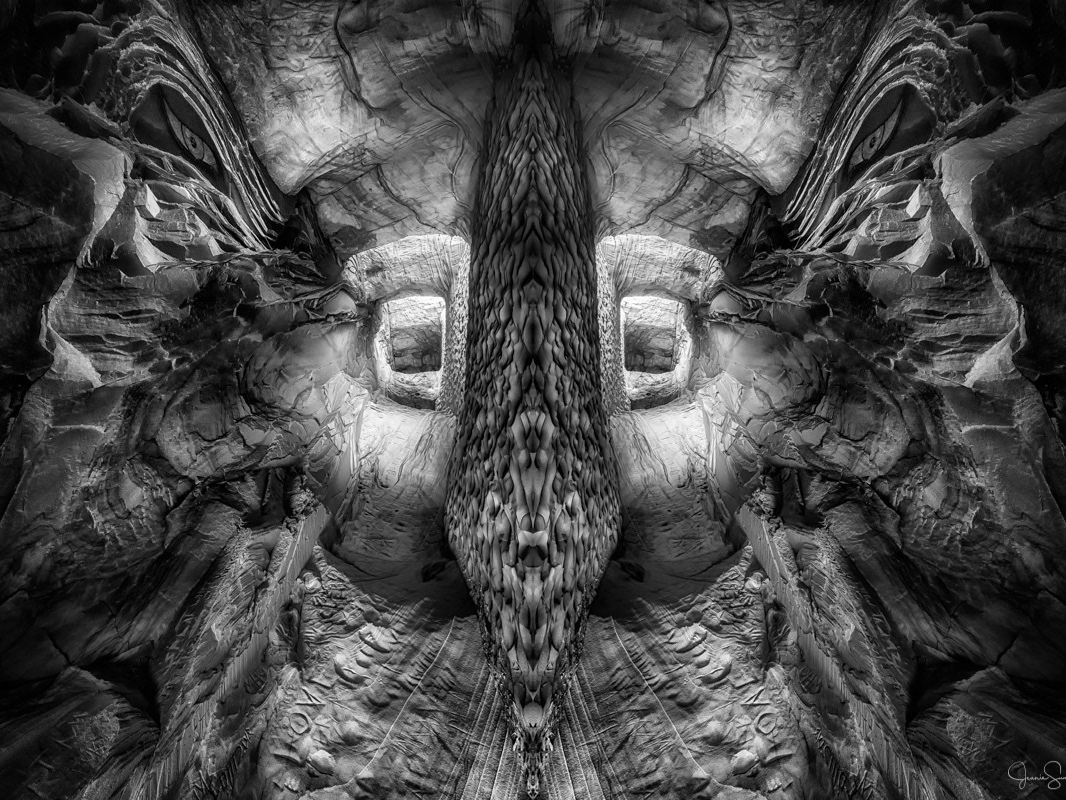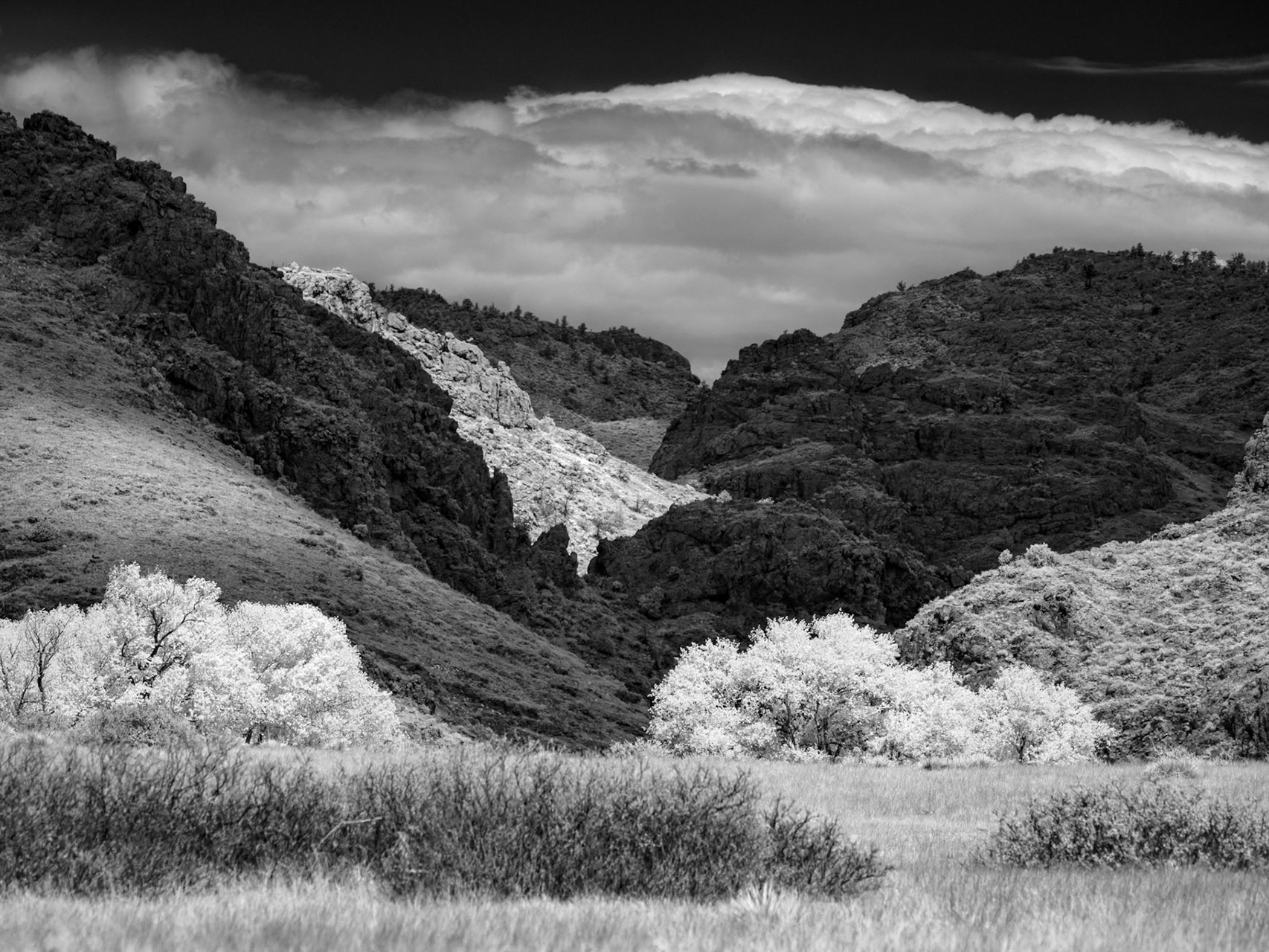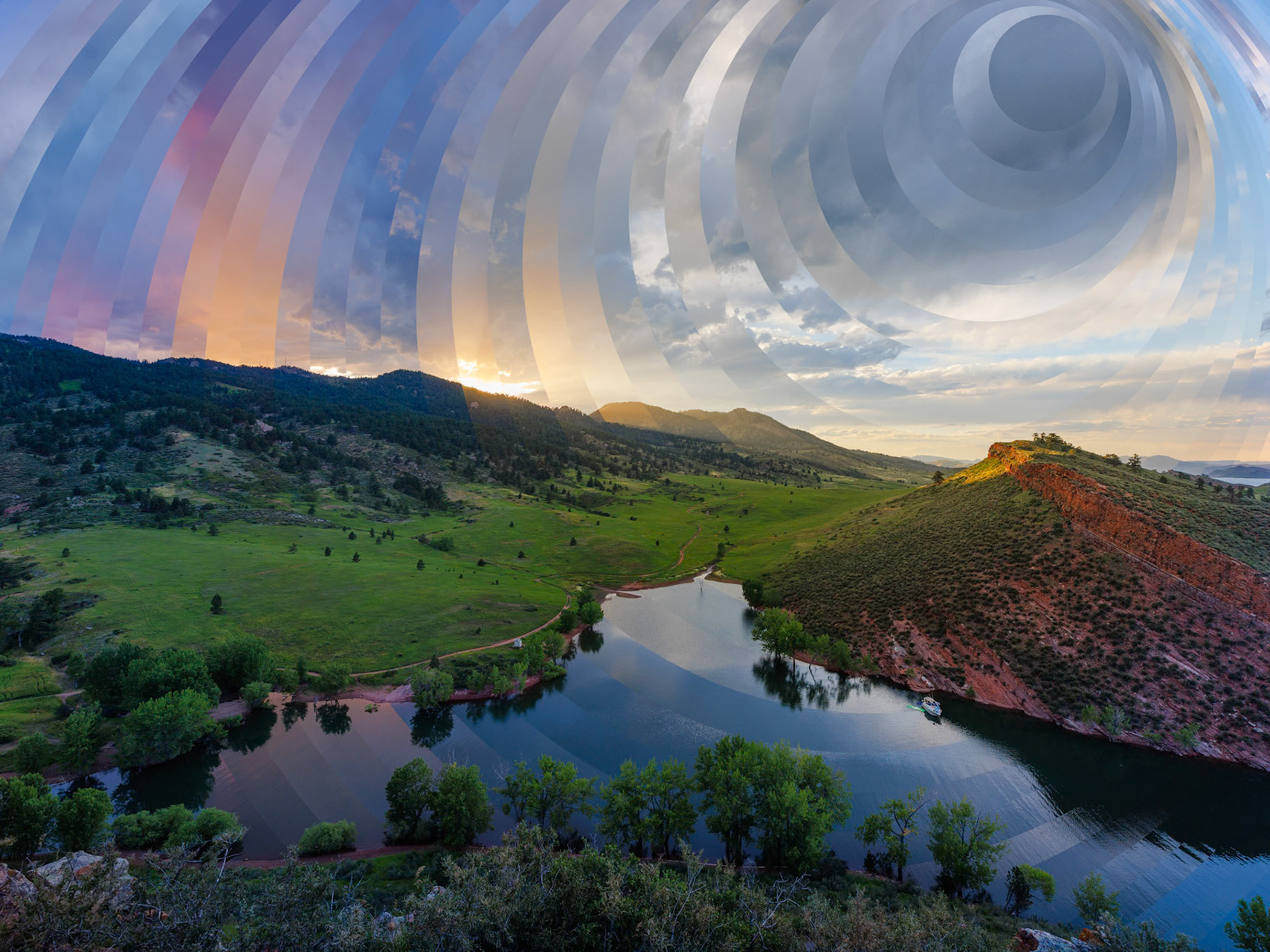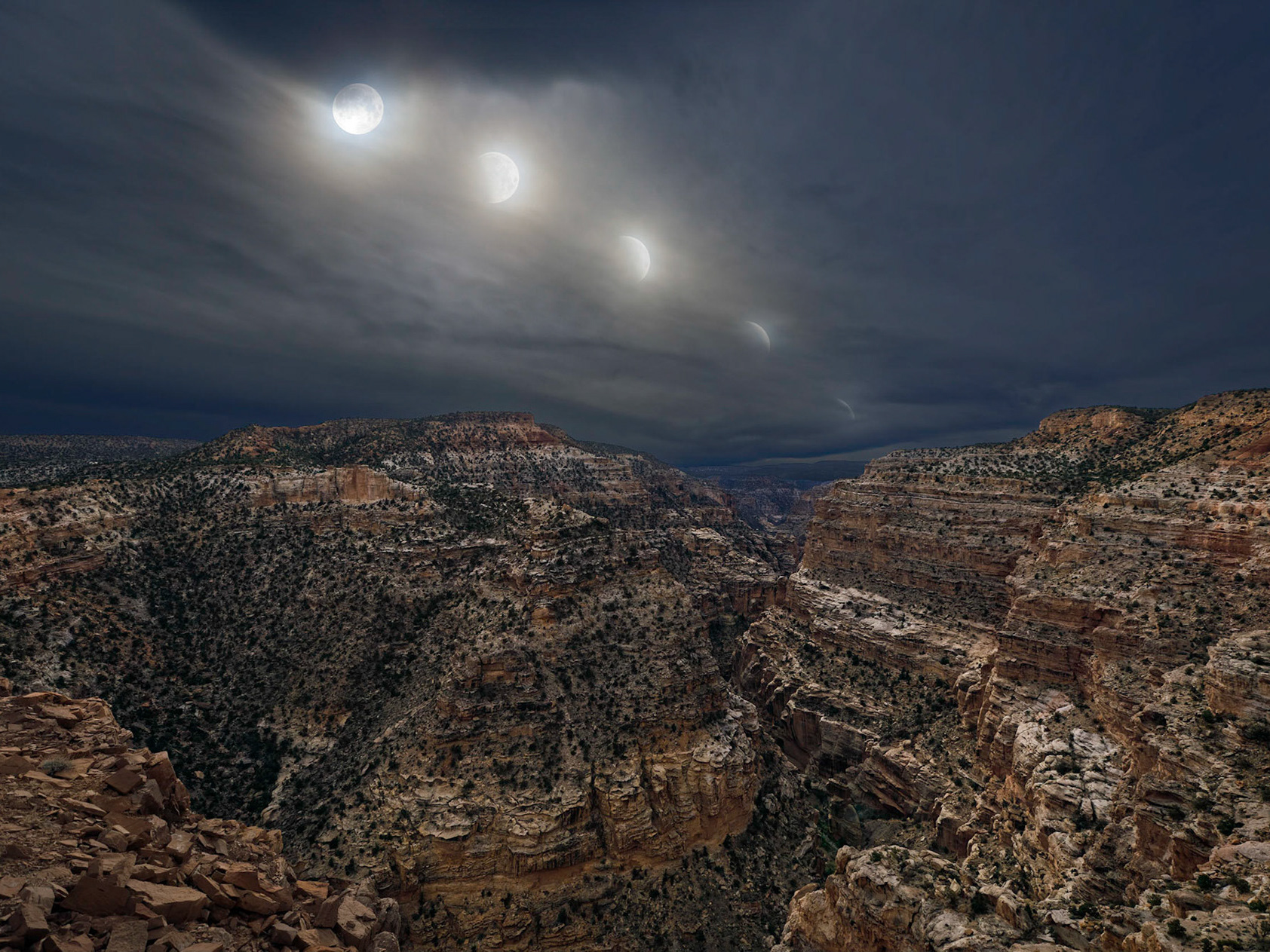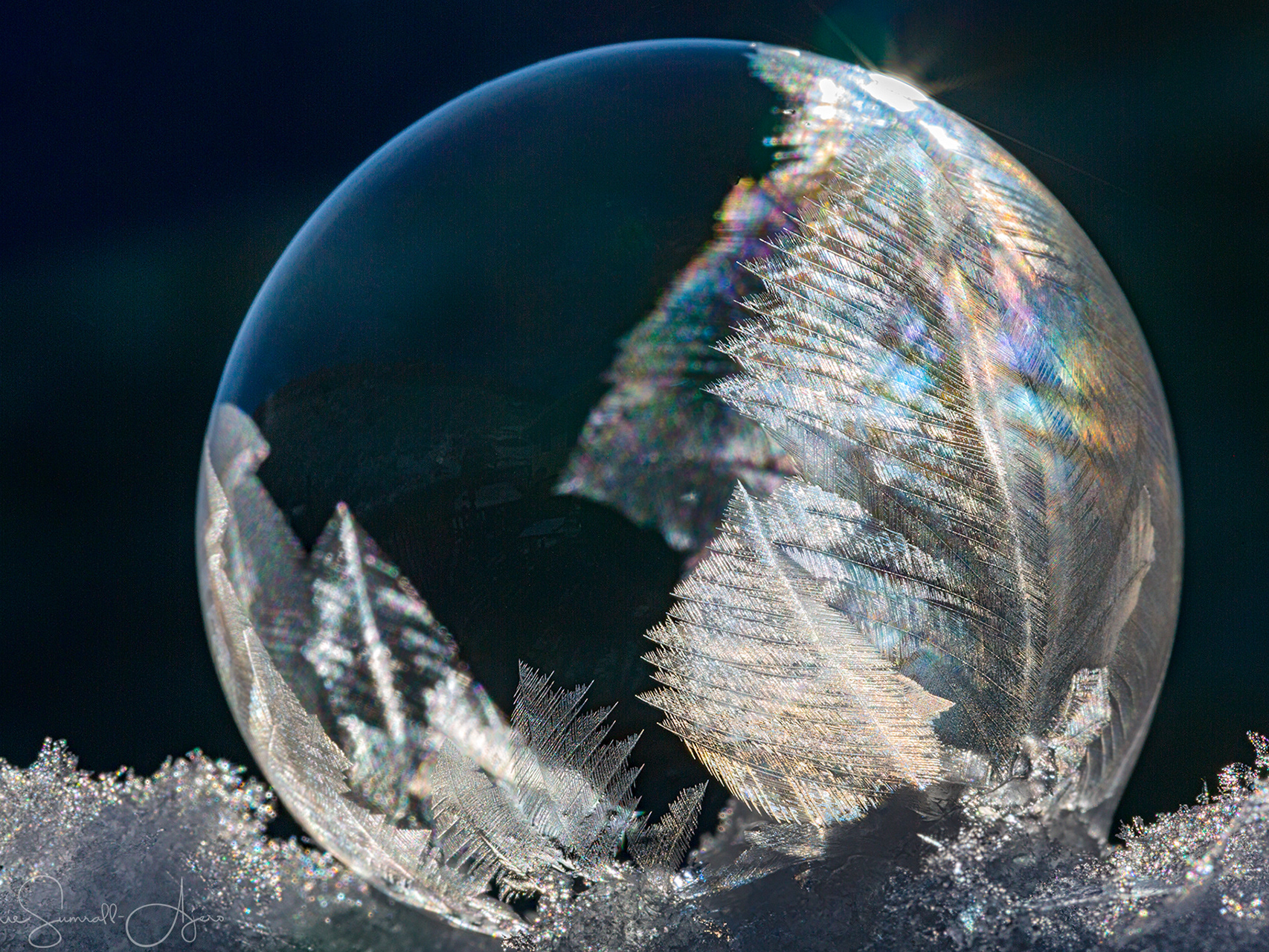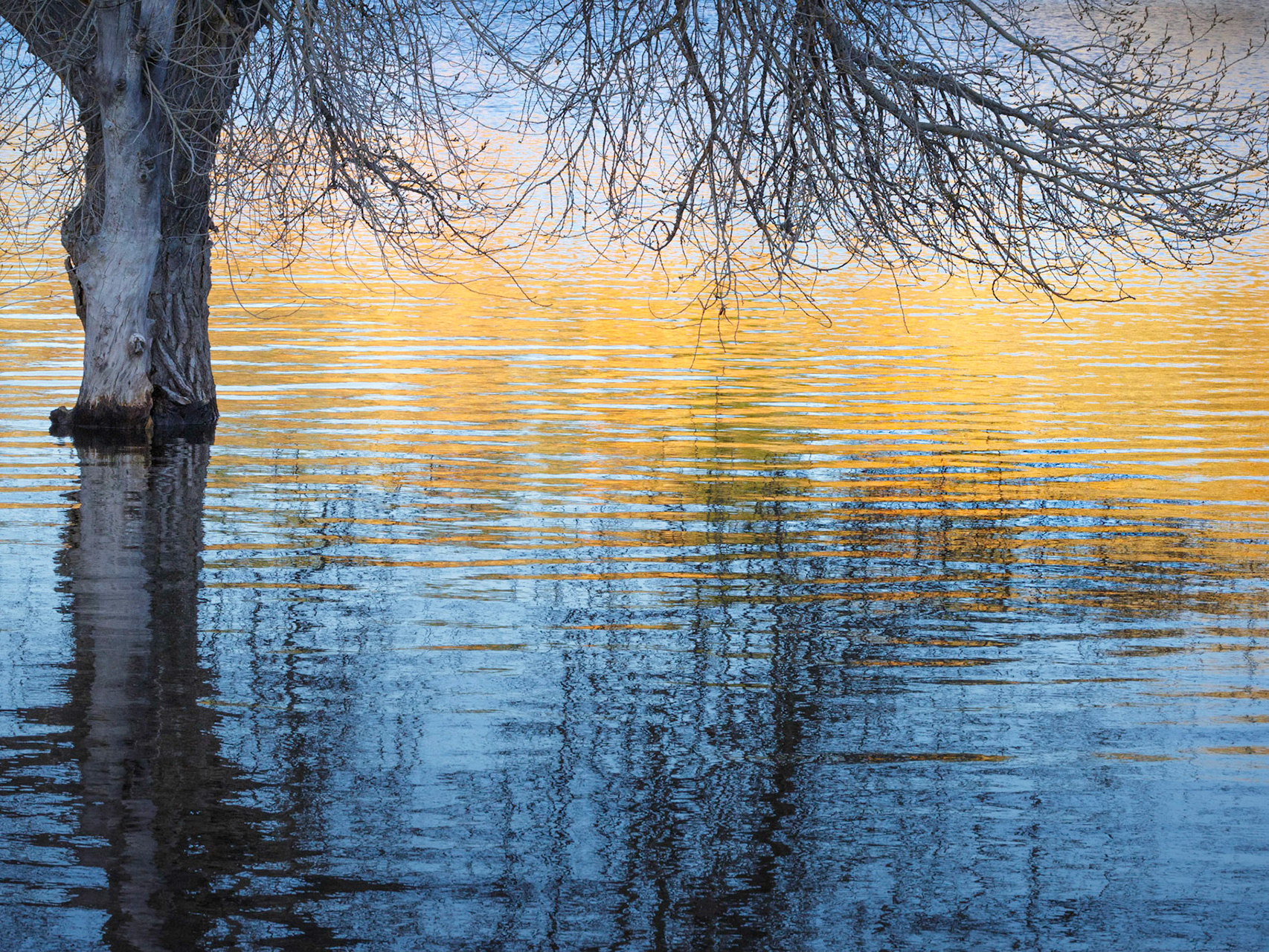I created this image for a photo challenge with the following prompt: For this week’s challenge, take a picture that includes some sort of motion blur. In particular, use a slow enough shutter speed so as to blur any movement in the photo. How you create the motion is completely up to you: Keep the camera still and move the subject; move the camera and keep the subject still; move both; or adjust the zoom and/or focus of the camera to get a zooming effect.
My process:
When I first read the challenge theme this week, I was excited to try a photo showing cloud movement. But by the time I was able to get out to take photos, we were having regular thunderstorms and I didn’t want to get caught outside if one came through.
I had just one more night before the week was over, but the forecast was ominous: tornado watch for our area until 9pm! Also, it was a full moon – not the best for seeing stars in the night sky. Hmmm. I did a search for “star trails during full moon” and discovered that not only was it possible, the images were other-worldly because the full moon lights the landscape as if it were daytime and yet there are stars in the sky. Cool!
Next I headed outside to find a composition for my star trails. I found two possibilities. One involved water in the foreground and was a little more difficult to get too, i.e. walking through tall weeds and trying to avoid mud bogs. It would be epic if I could pull it off, but I didn’t have a lot of leeway for error since I only had one night to make it happen. The other spot was a much simpler composition with a sinewy trail leading off to the horizon. It was much easier to get too and had a greater chance of success since I wouldn’t have to deal with water, reflections and potentially boats bobbing up and down during a long exposure.
Now that I knew I had a couple of compositions to choose from, I simply had to wait and see if the skies would clear enough to capture stars. I looked at http://www.cleardarksky.com/ and it indicated that we would have clear skies between 10pm and midnight, so I waited ever so impatiently to see what would happen. Around 9:30pm I took a few photos out my front door (in the direction I planned to shoot) and there were way more clouds than stars. I felt like the clouds would simply overtake the image if I stacked more than a few together. So I waited some more.
Lo and behold at 10:15pm I looked out the door and the skies were completely clear! What?! I ran around gathering my things, my husband dragged himself out of bed to join me and we headed off for a walk under the full moon. I decided to go to the composition without water since I wasn’t really sure how long the clear skies would last and I didn’t want any additional complications. I started my time lapse at 11:15pm and 24 minutes later clouds seemed to spontaneously form in front of our eyes. No kidding! I was taking 30 second exposures and I can tell from the sequence that the sky went from mostly clear to very cloudy in just 3 minutes. It was crazy to watch!
Animation of the last five minutes of my (mostly unedited) photo sequence.
I would have liked to have taken the time lapse for a full hour, so I wasn’t at all sure that 24 minutes would be enough. Conclusion: It is, but just barely. I would like the trails to be a bit more prominent, but I’m happy that they are visible at all.
I decided to try the free software StarStaX (https://markus-enzweiler.de/software/starstax/) to create the star trails from my time lapse series. It has two features that I like: gap filling and comet mode. The gap filling takes care of the tiny spaces that occur in the star trails between each frame when stacking in Photoshop. (I still don’t fully understand why it happens, but clearly I’m not the only one who sees the issue since it is a feature in this software.) The comet mode modifies the star trails to be narrow on one end and thicker at the other. It is a personal preference and I may not use it on every star trail image I make, but I think it adds a bit of interest in this one since the trails are not quite as long as I would like.
I also like the circling of the trails around the North Star in the “empty” part of the sky. That was pure luck because I had no control over where the clouds formed, but I’ll take it!
Canon 5Diii, Canon EF16-35mm f/2.8L III (at 16mm), 30.0 sec, f/4, ISO 1600, RAW (47 photos). Post-processing in LR, StarStaX and PS.
Lessons learned:
• It would be better to believe the chart at http://www.cleardarksky.com/ and head out well before the skies are supposed to clear so that I can be in place and ready to start shooting as soon as they do. If I had done that, I would’ve had a good hour’s worth of photos to work with and much longer star trails.
• I discovered a weird moiré pattern in the clouds after stacking in StarStaX. The fix is simple: turn off lens corrections in LR before exporting.
• Another thing about StarStaX – with gap filling turned on, it seemed to recognize some of the noise in the clouds as needed to be “filled”, which created some weird bright white patterns in the brightest parts of the clouds. I fixed this by out putting a version without the gap filling and then blended the two versions in Photoshop to remove the problem areas.
• I seem to have lost most of the “comet mode” in my post-processing – probably either when I upped the contrast or during sharpening. I’ll have to take a look at that in the future.
• The full moon really overpowered the stars (not surprising), so I'd like to try this same scene with a quarter moon to see the difference.

